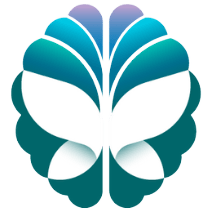By Ruth L. Formosa Ventura, Systemic Psychotherapist and Couple & Family Therapist
The family, in all its variant shapes, represents the microcosm of society. It is the human system in and through which most of us grow physically, mentally, psychologically, morally, spiritually, intellectually, and socially. It also shapes our beliefs of who we are as men and women, both in terms of our sexes and as well as our gender.
As such, it has the potential to nurture and contribute to our growth. Today, in honour of the International Day of Families, we invite you to reflect on how a family unit can embrace differences to build genuine connection and communities. Because if COVID-19 has taught us anything, it is that we are stronger together.
How do we understand the family?
Family is the basic unit of society, and there are a number of factors that come into play throughout its development – an ongoing interplay between nature and nurture. For example:
- the genetic make-up of every grown-up in the unit as well as the environment they are seeking to grow into together; and
- the individuals’ respective strengths and limitations as well as the opportunities, or lack thereof, in their surroundings.
Each family has hopes for creating something that belongs entirely to them, that distinguishes them from the rest. They want to shape each other in a way that the culture they are nourishing within the family reflects something of each of them as well as the context within which they live – be it sexual, religious, ethnic, gender, class or cultural context.
All families want to leave a legacy. Some are content to reproduce what they have inherited, especially if the family script still suits their relationships in the present times; some others want to create a new script as they seek to alter their narratives from the past generations.
Families are diverse and unique.
Polarized discourse
The existence of a family is so important that communities, whether they are professional communities, special groups, or society at large, tend to depict families and their behaviours in a certain way – based on families that are perceived as setting an example for the rest.
Family members within such families are perceived as: developing healthily, psychologically fit, able to form stable attachments to children and other adults, able to succeed in exploiting their strengths, and excelling their potential.
In contrast, anything that deviates from the norm risks being labelled as dysfunctional, broken, damaging, mentally disturbed, or a misfit of society.
Do we really want to blame, judge, label, and condemn anything that looks different from us, that we lack understanding for, or that we view as not complying with our standards? Do we want to hold the position of “us” and “them”?
Going beyond our differences
There is an alternative: to hold an inclusive stance toward any family around us and/or away from us.
History shows that where there is compassion and understanding, there is more humanity and peace. Our way forward in understanding and valuing the family has to be one that allows openness to embrace difference and the unfamiliar.
Rather than be quick to judge, families – and communities – need to foster an element of “curiosity” around what from the outside looks unusual. They have to be ready for self-reflexivity when in doubt, and possibly to generate more information so as not to act on prejudices.
Families have to pave the way for constructive conversations that foster more understanding within one’s family unit as well as with other families – to come together and build bridges of connections, for example by listening to other people’s stories especially when they sound different to ours. This expands our horizon of understanding, and enables empathy.
A Learning Culture
It would be more beneficial in today´s society if we embraced a “learning culture”. How nice it would be if every family took the stance to see its unit as an organization where its members “continually expand their capacity to create the results they truly desire, where new and expansive patterns of thinking are nurtured, where collective aspiration is set free, and where people are continually learning to see the whole together” (Senge 1990).
If we all saw family units as learning organizations, it would make it possible for families to learn from each other, to gather resources through the interactions between units, and to mutually support one another in their respective growth. In this way, as sense of community builds, it shifts from being about “us” and “them” to “We”.
If we look at what we have been living through during these few months due to COVID-19, it is a vivid example of all the above. The world is in solidarity. Families all over the world are following other families in different countries and continents, and sending out messages of comfort, resilience, and strength. Everyone is coming together irrespective of value systems, culture, race, gender, and wealth. We are going through a universal experience, and together we are living with the unknown, sharing knowledge, understanding, asking questions, and making use of each other’s resources. This pandemic has shown us that only by being together can we survive, move past, and overcome this situation. This is our present and our future: Togetherness.
So, when we see a family struggling because a family member is going through mental breakdown or is suffering from a mental illness, stop!
Do not gossip and look down. Do not label them as unfortunate. There is already enough guilt and shame within that family. Do not contribute to more. Instead, show compassion and try to understand how it feels to go through what they are going through. Acknowledge how difficult it must be seeing a loved one (if not the whole family) suffering. Learn more about what they are going through, and offer an act of kindness.
What we usually see is often covering huge amounts of pain. Let us not judge, but be together in that pain and – whether it is between individuals, families, or communities – let us stop any type of social stigma.



